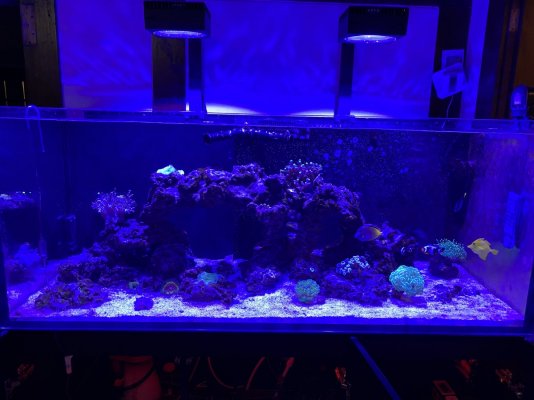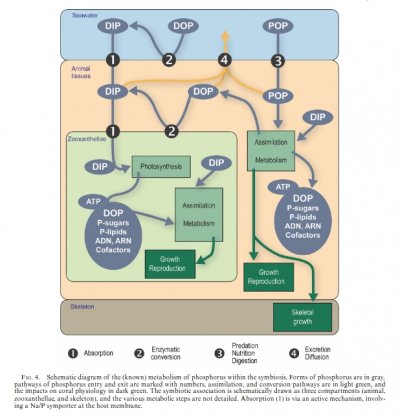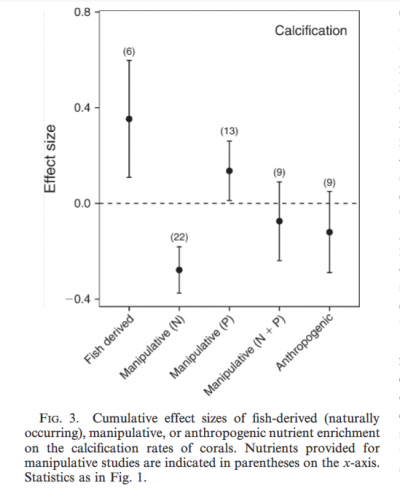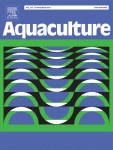I've found myself in a paradox of Coral Health and Nuisance Algae Growth!
I have a 130-gallon LPS dominant tank which has been setup for about a year and four months (first reef tank). It's been thriving for about three months now and I've seen really great coral growth and PE during this time. Whereas before everything was relatively stalled and PE was not great.
I contribute this largely to the fact that I've been feeding the fish a bit more and also dosing phyto and aminos. About two months ago I overdid it by feeding ReefBlizzard in excess and have since been paying the price in the form of GHA. I am running a medium/large (~1ft x 1ft x 2ft) fuge in the sump using a Tunze 8831 (12hr light cycle). The entire time my NO3 has been undetectable (RedSea Kit). PO4 has been all over the place, once at 0.26ppm and recently 0.04ppm (ULR Hanna). I believe the PO4 has been changing wildly because I have been removing GHA weekly. After it is removed, I see PO4 raise and as the GHA takes hold again it drops.
Since the battle with GHA algae, I've been feeding less and reduced amino and phyto dosing. As a result, PO4 has dropped and it seems coral PE is reduced and growth has slowed again.
Last parameter record (3/9/2022):
Alkalinity: 9.12 dKH
Calcium: 415 ppm
Magnesium: 1396 ppm
Salinity: 35.1 ppt
Ammonia: 0 ppm
Nitrites: 0 ppm
Nitrates: 0 ppm (Almost always undetectable using RedSea kit)
Phosphates: 0.04 ppm (When PO4 was higher coral PE and growth was great)
Temp: 78.0F
pH: 8.05
I have been recently reading about many of the common methods of phosphate export to get rid of the GHA once and for all, but I keep landing at the same question(s):
I'd really like to hear what you all have done to rid your DT of nuisance algae while keeping your coral happy!
Also, for those that don't currently have an algae issue, what do you think contributed to your success in providing the right nutrient demand for your coral while keeping unwanted algae to a minimum?
This is my first post here and want to thank all of you on the R2R forums! It's been a great tool over the last year and really enjoy the conversations.
It's great to have so much friendly conversation about the hobby all in one place.

I have a 130-gallon LPS dominant tank which has been setup for about a year and four months (first reef tank). It's been thriving for about three months now and I've seen really great coral growth and PE during this time. Whereas before everything was relatively stalled and PE was not great.
I contribute this largely to the fact that I've been feeding the fish a bit more and also dosing phyto and aminos. About two months ago I overdid it by feeding ReefBlizzard in excess and have since been paying the price in the form of GHA. I am running a medium/large (~1ft x 1ft x 2ft) fuge in the sump using a Tunze 8831 (12hr light cycle). The entire time my NO3 has been undetectable (RedSea Kit). PO4 has been all over the place, once at 0.26ppm and recently 0.04ppm (ULR Hanna). I believe the PO4 has been changing wildly because I have been removing GHA weekly. After it is removed, I see PO4 raise and as the GHA takes hold again it drops.
Since the battle with GHA algae, I've been feeding less and reduced amino and phyto dosing. As a result, PO4 has dropped and it seems coral PE is reduced and growth has slowed again.
Last parameter record (3/9/2022):
Alkalinity: 9.12 dKH
Calcium: 415 ppm
Magnesium: 1396 ppm
Salinity: 35.1 ppt
Ammonia: 0 ppm
Nitrites: 0 ppm
Nitrates: 0 ppm (Almost always undetectable using RedSea kit)
Phosphates: 0.04 ppm (When PO4 was higher coral PE and growth was great)
Temp: 78.0F
pH: 8.05
I have been recently reading about many of the common methods of phosphate export to get rid of the GHA once and for all, but I keep landing at the same question(s):
- SHORT TERM: I'd like to reduce nutrients low enough to kill off the GHA, but understand I will also have an effect on corals. What can be done to remove GHA, but keep the coral happy?
- LONG TERM: How do I balance nutrients available in the system to promote coral growth and overall health while avoiding nuisance algae?
- What is the best way to identify having "enough" nutrients in the system for coral health if the nutrients are undetectable? Whether this is due to coral or algae consumption or both.
I'd really like to hear what you all have done to rid your DT of nuisance algae while keeping your coral happy!
Also, for those that don't currently have an algae issue, what do you think contributed to your success in providing the right nutrient demand for your coral while keeping unwanted algae to a minimum?
This is my first post here and want to thank all of you on the R2R forums! It's been a great tool over the last year and really enjoy the conversations.
It's great to have so much friendly conversation about the hobby all in one place.






















